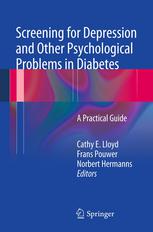

Most ebook files are in PDF format, so you can easily read them using various software such as Foxit Reader or directly on the Google Chrome browser.
Some ebook files are released by publishers in other formats such as .awz, .mobi, .epub, .fb2, etc. You may need to install specific software to read these formats on mobile/PC, such as Calibre.
Please read the tutorial at this link: https://ebookbell.com/faq
We offer FREE conversion to the popular formats you request; however, this may take some time. Therefore, right after payment, please email us, and we will try to provide the service as quickly as possible.
For some exceptional file formats or broken links (if any), please refrain from opening any disputes. Instead, email us first, and we will try to assist within a maximum of 6 hours.
EbookBell Team

4.3
68 reviewsThis book is divided into two main sections, and covers a broad range of issues important for health practitioners to be aware of when caring for people with co-morbid diabetes and depression. Section One of the book contains the overall ideas and the more recent developments in measuring psychological morbidity in people with diabetes. When attempting to identify people with depression or other psychological problems, it is important for practitioners to recognize the limitations of screening as well as its utility. Issues such as the basic principles regarding when and when not to screen, the cultural applicability of tools, different questionnaire formats and key concepts such as sensitivity and specificity of tools, and their positive and negative predictive value, will be considered. In particular there has been increased interest in the concept of diabetes-related distress and several tools have been developed to measure this. There are broad-based measures of distress such as the Problem Areas in Diabetes (PAID) scale, the Diabetes Adjustment Scale (DAS), The Diabetes Health Profile, The Fear of Hypoglycemia Scale, etc. There are also a range of generic quality of life tools which have been used effectively in people with diabetes; for example the Medical Outcomes Survey Short-Forms (SF36, SF12), the World Health Organisation Well-being questionnaire (WHO-5) and the EQ5-D. These tools are important because they measure aspects of psychological well-being that are specifically associated with the experience of having a long-term conditions and so have important implications for both self-care and health care practice. The potential overlap of symptoms of depression and symptoms of diabetes-related distress are considered in this section and the implications for practice discussed. Section Two covers the most commonly used tools that have been used to screen for depression. For each tool considered some information which is easily referred to by the readeris set out in a table which includes details of the authors, time of first use, country where it was first developed, some examples of the questions used, the languages it is available in, data on sensitivity/specificity. Each instrument will then be discussed in terms of its use in research as well as practice, and its applicability in different patient groups, different cultural settings and so on. Guidance on the practical use of each tool is included, and the most popular depression screening tools are focussed on.